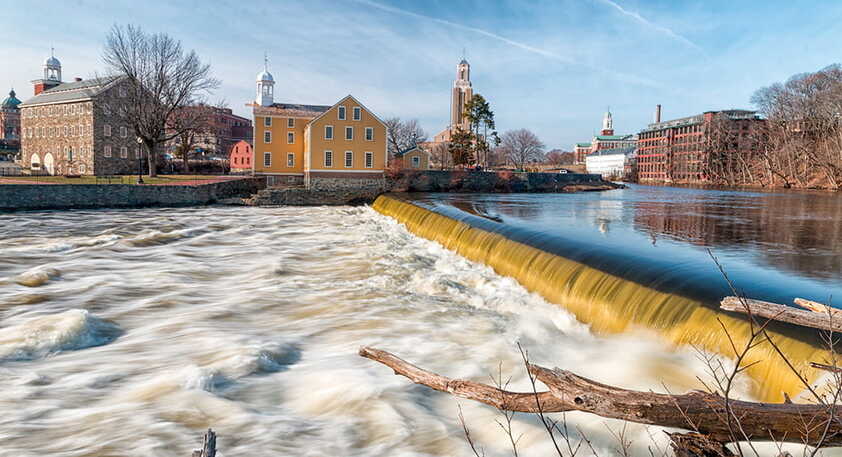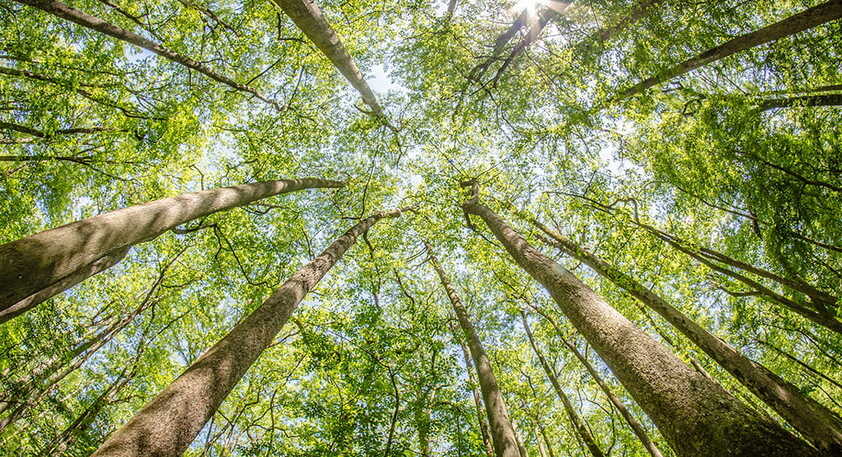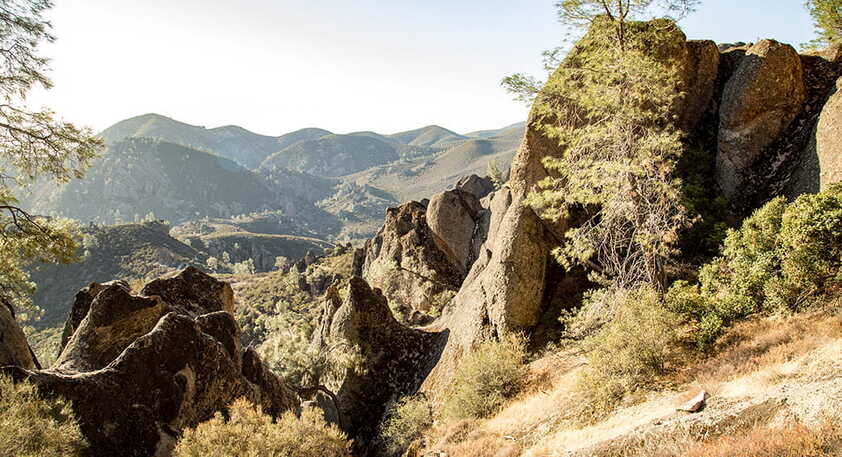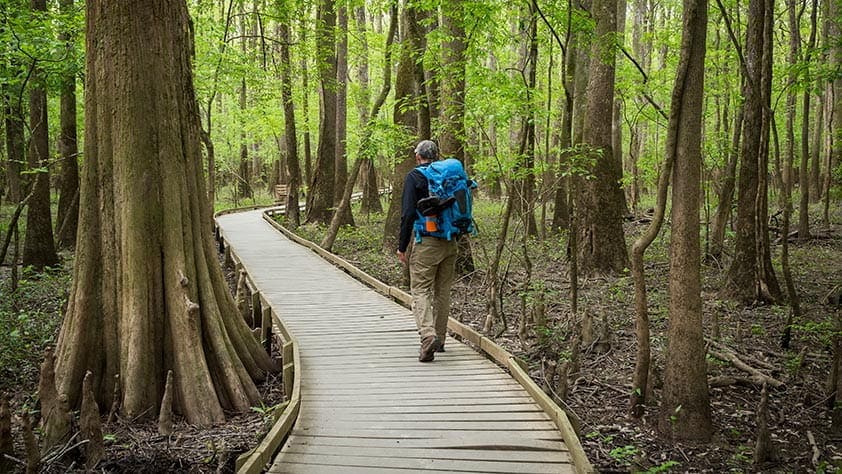Although the National Park Service oversees nearly 425 sites, only 63 have reached national park status. These include some of the most beloved places in the United States: its loftiest mountains, its grandest canyons, its most important cultural treasures. Each year all national parks that charge entrance fees waive their admission for a set number of days. In 2023, 5 days have been designated fee-free days, including the first day of National Park Week, April 22, and National Park Service Birthday Weekend, August 25.
Here, we highlight five recent national park additions that you should consider adding to your next vacation itinerary.
New River Gorge, West Virginia
America’s newest national park surrounds one of the oldest rivers. New River Gorge National River, established in 1978, became a national park in December 2020. The park’s 70,000 acres include 53 miles of river 1,000 feet below dramatic cliffs, miles of bike and hiking paths, relics of the 18th and 19th-century coal mining in the area and the picturesque New River Gorge Bridge, which is the longest steel span in the western hemisphere and the third highest bridge in the country.
In addition to hiking and biking, white water rafting and rock climbing up the limestone cliffs are some of the favorite activities to do here. And as you drive through the park, be sure to turn on this free audio tour about the legacy of African-American coal miners in the region. Stop and explore the preserved train depot at Thurmond, a former hub of the Chesapeake & Ohio Railway line that today is a visitor center.
NEA member travel benefits: The nearest major airport to the park is West Virginia International Yeager Airport in Charleston (CRW), about 70 miles away, and you’ll find deals on flights through the NEA Travel Program. Search for hotels at great prices like an average of $104/per night for large, comfortable rooms at the Country Inn & Suites by Radisson, Charleston South WV, which has a fitness center, indoor pool and hot tub, plus a free hot breakfast. The Embassy Suites Charleston averages $125/night and features spacious, modern suites with sofa beds and kitchenettes. There is also an indoor pool and fitness center, and free breakfast.
Plan your itinerary: Visit Charleston WV | West Virginia Tourism
White Sands, New Mexico
The country’s 62nd national park was declared at the end of 2019, making the dazzling White Sands National Monument into a full-fledged park after 87 years. There’s a 16-mile roundtrip scenic drive that leaves from the visitor center and heads into the center of the world's largest gypsum sand dune field. Along the way, stop to hike the five-mile roundtrip Alkali Flat or stroll an easy one-mile-loop nature trail.
Bring a picnic, some blankets and sunglasses (the white sand is really bright!), and you may even want an umbrella. Also be sure to take along a sled—or buy a plastic saucer at the visitor center gift shop. The massive dunes here are perfect for coasting down.
The park is best reached by Highway 70, either northeast of Las Cruces or southwest of Alamogordo.
NEA member travel benefits: Book a flight via NEA Travel: Airfare into Las Cruces International Airport (LRU) or El Paso International Airport (ELP), which is about 85 miles away. And check for hotel deals to stay at accommodations such as an average of just $75 a night for the charming Southwestern style Classic Desert Aire Hotel in Alamogordo, which has some rooms with kitchenettes and an outdoor pool for guests. The Hampton Inn Alamogordo averages $105 a night, and it includes breakfast and WiFi.
Plan your itinerary: Alamogordo NM True | New Mexico Tourism & Travel
Blackstone River Valley National Historical Park, Rhode Island and Massachusetts

America’s Industrial Revolution kicked into gear along New England’s Blackstone River. The turbulent waterway powered Slater Mill, the nation’s first successful water-powered cotton-spinning factory, in 1790, and fueled a growing industry of steam-powered textile mills in the 1800s.
Because of its pivotal role as the birthplace of the Industrial Revolution, the National Park Service named a 46-mile stretch of the Blackstone River Valley—from Worcester, Massachusetts, to Providence, Rhode Island—a “National Heritage Corridor” in 1986. The Park Service elevated Blackstone to national park status in 2014, reflecting a trend to preserve and interpret more of the nation’s cultural history.
Rather than a traditional national park with entrance gates, Blackstone is what the National Park Service calls “a living landscape.” Its restored mills, museums, historic villages and other cultural sites are scattered across 24 cities and towns in the valley. Get your bearings at the Blackstone Valley Visitor Center just north of Providence in Pawtucket. Across the street, tour the restored Slater Mill and other historic structures.
Fifteen miles north in Woonsocket, the Museum of Work and Culture tells the story of textile-mill workers and the rise of trade unions. Also in Woonsocket, board the Blackstone Valley Explorer riverboat for a narrated tour along the historic waterway. Nearby, hop on the Blackstone River Bikeway, a paved bike path that follows the river and will eventually run the length of the national park.
In Uxbridge, Massachusetts, River Bend Farm anchors a 1,000-acre natural area. Hike along the historic Blackstone Canal towpath or slide a canoe into the water for a paddle trip through the 19th century.
NEA member travel benefits: Through the NEA Travel Program, you can search for deals on flights to T.F. Green Memorial State Airport in Providence (PVD) or Boston Logan International Airport (BOS). Look for affordable lodging options such as Hampton Inn Pawtucket for an average of $123/night including breakfast or the Woonsocket Motor Inn for around $90/night.
Plan your itinerary: City of Pawtucket | City of Woonsocket | City of Uxbridge | Visit Rhode Island | Visit Massachusetts
Congaree National Park, South Carolina

An excursion into Congaree feels otherworldly, where coffee-colored waters bleed through dim forests of old-growth cypress and tupelo. These low-lying floodplains and salt marshes preserve the nation’s largest remaining tract of southern old-growth bottomland forest in North America. Timber companies logged most of the Deep South’s old-growth trees in the 19th and 20th centuries. This last significant tract was threatened with logging, too, when Congress preserved it as a national monument in 1976. Congaree became an International Biosphere Reserve in 1983 and a national park in 2003.
Congaree’s watery world lies just 20 miles southeast of Columbia, South Carolina. Start at the Harry Hampton Visitor Center for orientation films, natural and cultural history exhibits, and information on trails. Pick up an interpretive brochure for the Boardwalk Loop, a 2.6-mile elevated walkway that lets you comfortably explore the wetlands and woodlands that naturally flood several times a year. The nutrients carried by the waters nourish the lofty forest that towers overhead. The park is renowned for its “champion trees,” including the nation’s largest loblolly pine, water hickory and swamp tupelo.
Several other hiking trails wander through the nearly 27,000-acre park. To really experience Congaree, paddle along the Cedar Creek canoe trail. The marked, 15-mile route slips through dense forest draped with Spanish moss, humming with hammering woodpeckers and hooting owls. (Book early for the park’s occasional ranger-guided canoe tours.) You’ll feel worlds away, yet you can be back in Columbia in time for dinner.
NEA member travel benefits: Fly into Columbia Metropolitan Airport (CAE) by buying airline tickets through NEA Travel: Airfare. And then look for hotel deals like rooms at Fairfield Inn by Marriott Columbia Northwest that average of $79 per night and include breakfast and use of the indoor pool. Tru by Hilton Harbison Columbia has modern lifestyle rooms for an average of $106 per night, and that includes breakfast and WiFi.
Plan your itinerary: Experience Columbia | Discover South Carolina
Pinnacles National Park, California

This national park got its start more than 23 million years ago, when eons of erupting volcanoes, flowing lava and shifting tectonic plates created a 30-mile-wide volcanic field of rocky spires, canyons and caves. Located about 70 miles south of San Jose, the unusual landscape was first protected as a national monument by Teddy Roosevelt in 1908. President Obama signed it into law as a national park in 2013. More than half the park is designated as wilderness, which helps protect the highly endangered California condor, which has been reintroduced there.
The imposing rock formations divide Pinnacles National Park in half. No roads connect the east and west halves; only hiking trails penetrate the park’s wild interior. Rock climbers and visitors seeking the most dramatic views head for the West Entrance (although CA-146 leading to the park is too narrow and winding for RVs and large vehicles).
The East Entrance offers better road access and more facilities, including the Pinnacles Visitor Center and the park’s only campground. Several of the park’s 30 miles of hiking trails depart from the nearby Bear Gulch Day Use Area. The Moses Spring to Rim Trail loop weaves past rock formations and through Bear Gulch Cave, formed when huge boulders wedged into a narrow gorge. (To explore the park’s caves, bring a flashlight and check ahead for cave closures that protect bat colonies.) Whichever entrance you choose, avoid the summer months and carry water—this desert wilderness is best explored in spring and fall.
NEA members travel benefits: Book your flight to San Jose Mineta International Airport (SJC), a little over an hour’s drive from the park, via NEA Travel: Airfare. And then check for hotel deals to stay at accommodations such as an average of $146 a night at Fairfield Inn by Marriott Hollister, which has an indoor pool and gym.
Plan your itinerary: San Benito County Chamber of Commerce | Visit California
Get more national park tips with this insider’s guide on how to avoid crowds, discover hidden treasures and get coveted reservations.












